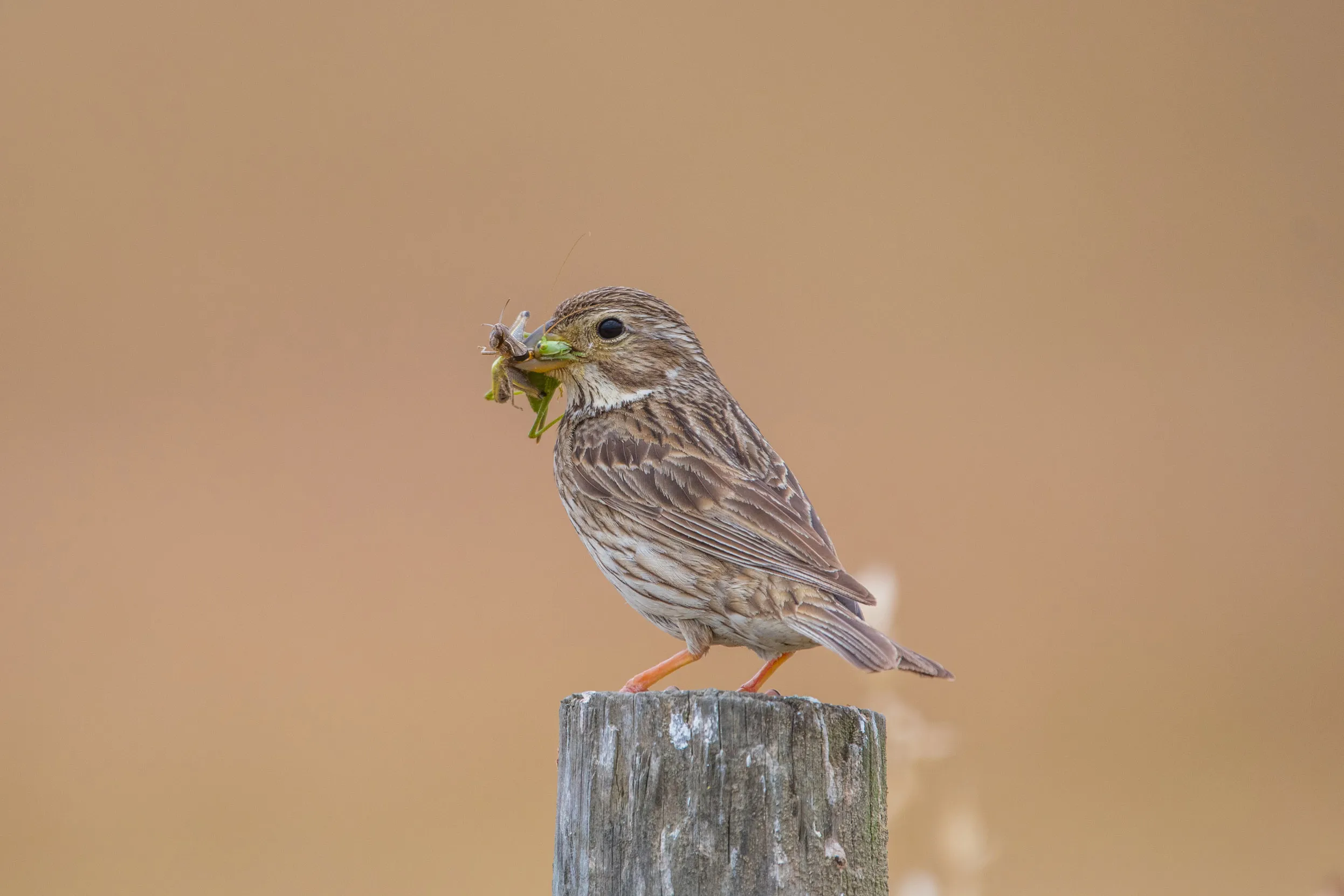
Corn Bunting conservation - Advice for farmers
The Corn Bunting is a large, heavy-looking brown bunting with a particularly thick bill, generally found on open arable and mixed farmland.

On this page
Corn buntings in brief
The UK population of corn buntings has declined by 86% since 1967. This is mainly because fewer seed and insect food sources are available to them on farmland.
Also, because corn buntings are a late nesting species, their nests can be destroyed during harvesting or cutting.
Key points
- Ensure the farm provides nesting habitat, summer food and winter food.
- Boost insect food using buffer strips, conservation headlands or other low-input crop options. Accepting all non-essential cookies helps us to personalise your experience
- Provide seed food, especially cereal grain, through the winter with overwinter stubbles or seed-rich
What this species needs
A nesting habitat which remains available until the late summer
Corn Buntings nest on the ground mainly in cereal fields, grass silage fields or grass field margins. They start nesting late in the spring, usually June or July, and can have flightless chicks well into August.
Lots of seeds throughout the year
Adults feed mainly on seeds, especially cereal grain. Places where they can find seeds include winter stubbles, newly-sown crops, areas of spilt grain or places where cereals are fed to outdoor cattle, and cereal-rich wild bird seed mix plots. They are extinct in some pastoral areas of the UK.
Insects and spiders to feed to chicks in the spring and summer
Corn Buntings take insects from crops, grassland, field margins and fallow land to feed their chicks. Breeding success relates directly to the availability of insect food.

How to help
On arable land
- Only use pesticides when the infestation exceeds the economic threshold. Try to avoid using broad-spectrum insecticides after 15 March. These remove beneficial insects and spiders which move into the crops in the spring. The loss of this food source is particularly damaging to corn buntings.
- Adopt conservation headlands
- Avoid spraying the outer 6m of cereal fields with insecticides or herbicides targeted at broad-leaved weeds. This enables beneficial insects and chick food for corn buntings to survive. Leaving patches of conservation headlands unharvested overwinter can provide an invaluable winter seed food source.
- Spray and cultivate stubbles as late as possible - This provides important winter feeding habitat
- Establish cereal-rich wild bird cover crops. Cereals are an essential component of wild bird cover crops in areas with corn buntings. They are very important on farms where overwinter stubbles are not a viable option.
- Create grass margins around arable fields to increase food availability close to the nesting habitat. Include species such as cocksfoot in the seed mix to create a tussocky sward. After the margins are established, cut in the autumn only once every three years. Avoid cutting all margins in the same year. Corn buntings are more likely to use margins that have no boundary feature or just a post and wire fence.
- Use Beetle banks in fields greater than 0.2 square kilometres to provide nesting cover for corn buntings and overwintering habitat for beneficial insects. Beetle banks are 2m grass strips through the middle of arable fields. Such fields can be managed as one unit, as the headland is still cropped.
On grassland
- Introduce arable fodder crops or create small plots of wild bird cover to provide a seed-rich habitat in pastoral areas. Maize is probably not of value to corn buntings unless it is undersown with a seed-bearing crop. The lack of cultivation in the autumn as well as restrictions on herbicide use will produce an abundant supply of insects.
- Fence off margins of up to 6m around improved grassland and leave these unfertilised, uncut and ungrazed. Graze or cut in September every 2-3 years. Select margins which are adjacent to short thick hedges or post and wire fences.